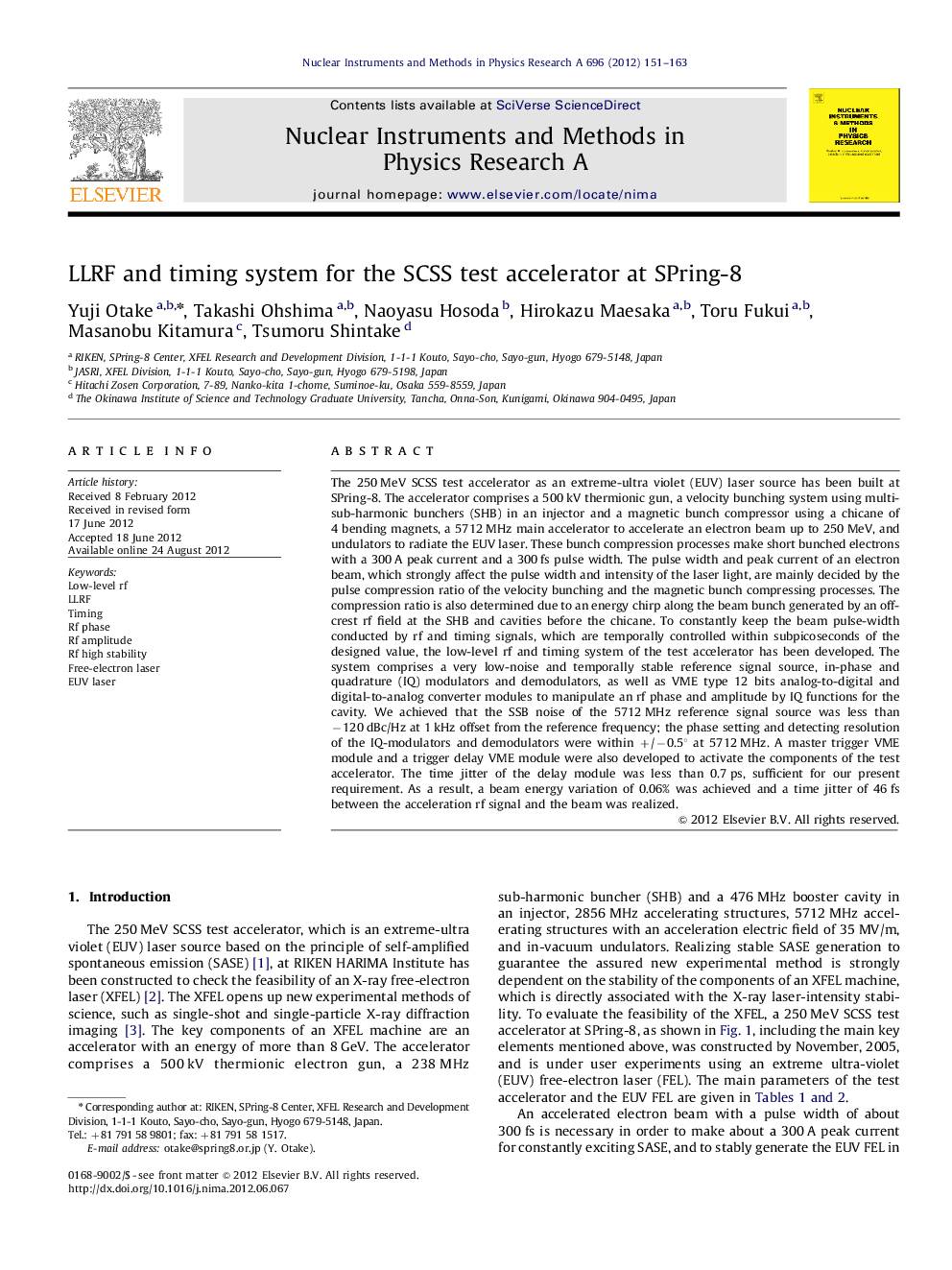| کد مقاله | کد نشریه | سال انتشار | مقاله انگلیسی | نسخه تمام متن |
|---|---|---|---|---|
| 1823492 | 1526429 | 2012 | 13 صفحه PDF | دانلود رایگان |

The 250 MeV SCSS test accelerator as an extreme-ultra violet (EUV) laser source has been built at SPring-8. The accelerator comprises a 500 kV thermionic gun, a velocity bunching system using multi-sub-harmonic bunchers (SHB) in an injector and a magnetic bunch compressor using a chicane of 4 bending magnets, a 5712 MHz main accelerator to accelerate an electron beam up to 250 MeV, and undulators to radiate the EUV laser. These bunch compression processes make short bunched electrons with a 300 A peak current and a 300 fs pulse width. The pulse width and peak current of an electron beam, which strongly affect the pulse width and intensity of the laser light, are mainly decided by the pulse compression ratio of the velocity bunching and the magnetic bunch compressing processes. The compression ratio is also determined due to an energy chirp along the beam bunch generated by an off-crest rf field at the SHB and cavities before the chicane. To constantly keep the beam pulse-width conducted by rf and timing signals, which are temporally controlled within subpicoseconds of the designed value, the low-level rf and timing system of the test accelerator has been developed. The system comprises a very low-noise and temporally stable reference signal source, in-phase and quadrature (IQ) modulators and demodulators, as well as VME type 12 bits analog-to-digital and digital-to-analog converter modules to manipulate an rf phase and amplitude by IQ functions for the cavity. We achieved that the SSB noise of the 5712 MHz reference signal source was less than −120 dBc/Hz at 1 kHz offset from the reference frequency; the phase setting and detecting resolution of the IQ-modulators and demodulators were within +/−0.5° at 5712 MHz. A master trigger VME module and a trigger delay VME module were also developed to activate the components of the test accelerator. The time jitter of the delay module was less than 0.7 ps, sufficient for our present requirement. As a result, a beam energy variation of 0.06% was achieved and a time jitter of 46 fs between the acceleration rf signal and the beam was realized.
Journal: Nuclear Instruments and Methods in Physics Research Section A: Accelerators, Spectrometers, Detectors and Associated Equipment - Volume 696, 22 December 2012, Pages 151–163